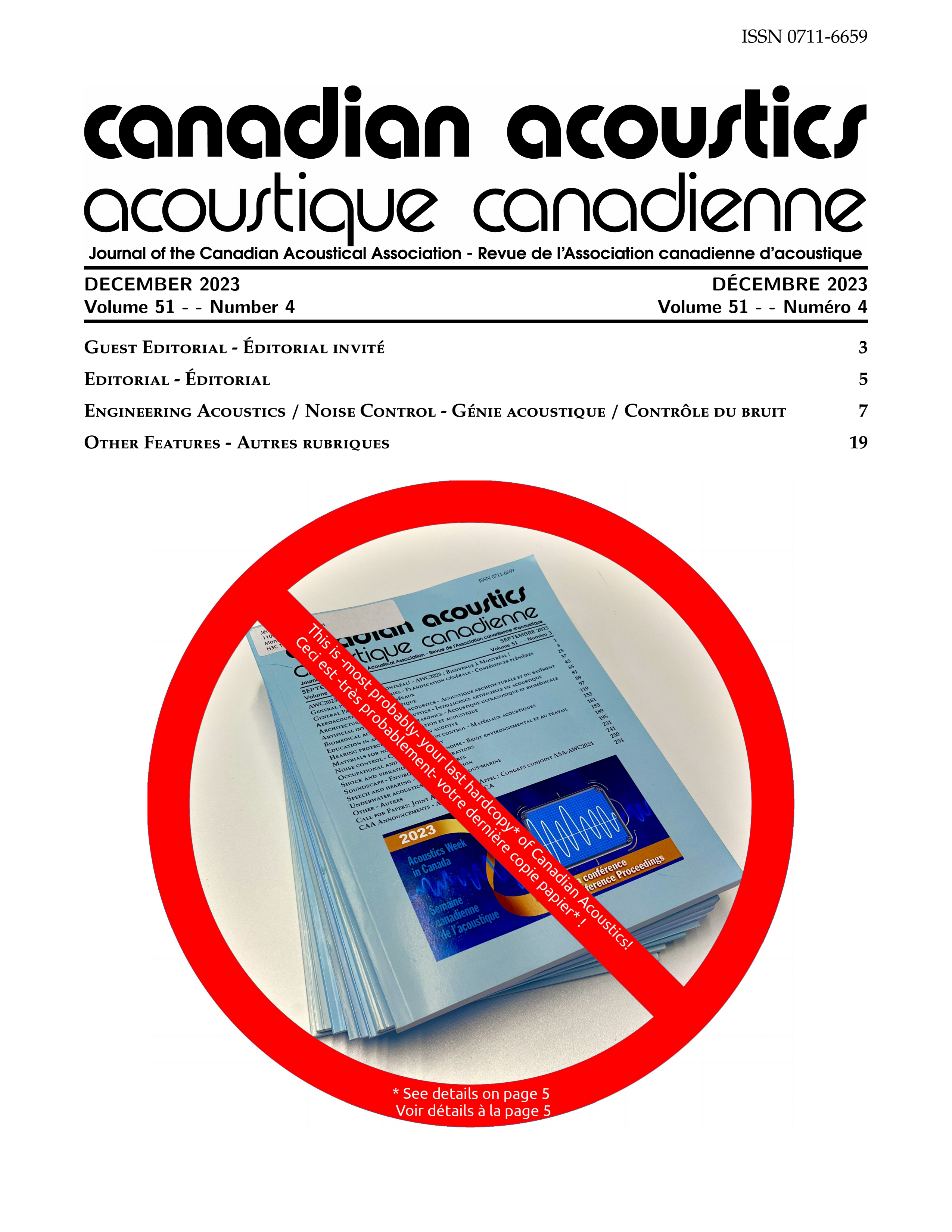A Note on the Resonance Frequency Equation of Microperforated Panel Sound Absorber
Keywords:
Helmholtz resonators, microperforated panel absorber, resonance frequency, , mass reactance, acoustic resistance, perforation constant.Abstract
Microperforated panel, MPP, can be considered as a multi or N-holes Helmholtz resonator. It is a light, clean and tunable sound absorber, for which a first modeling was established by Maa in 1975. It is a resonator in sub-millimeter size of diameter (0.5–1) mm, to provide enough acoustic resistance and low acoustic mass reactance which are necessary for wide-band sound absorber. The characteristic property of such a resonator is its ability to absorb sound waves of a particular frequency, the so-called resonant frequency. In practical and engineering applications, for prefabricated microperforated panel, it is important to determine the resonance frequency as precisely as possible, especially if the panel will be used as a sound absorber at a certain frequency. There is high deviation between the exact resonance frequency value of single MPP absorber which can be obtained from the peak of calculated absorption curve by Maa’s equation and that value which can be calculated by the classical N-holes Helmholtz resonance frequency equation. A proposed modified and simplified equation for calculating the resonance frequency of single MPP sound absorber of hole diameter (0.5–1) mm, which derived from absorption equation of Maa, is introduced. The new proposed equation gave good agreement and little deviation, maximum deviation was about 5 Hz over frequency range from 50 Hz to 1000 Hz, from the exact value of resonance frequency.
Additional Files
Published
How to Cite
Issue
Section
License
Author Licensing Addendum
This Licensing Addendum ("Addendum") is entered into between the undersigned Author(s) and Canadian Acoustics journal published by the Canadian Acoustical Association (hereinafter referred to as the "Publisher"). The Author(s) and the Publisher agree as follows:
-
Retained Rights: The Author(s) retain(s) the following rights:
- The right to reproduce, distribute, and publicly display the Work on the Author's personal website or the website of the Author's institution.
- The right to use the Work in the Author's teaching activities and presentations.
- The right to include the Work in a compilation for the Author's personal use, not for sale.
-
Grant of License: The Author(s) grant(s) to the Publisher a worldwide exclusive license to publish, reproduce, distribute, and display the Work in Canadian Acoustics and any other formats and media deemed appropriate by the Publisher.
-
Attribution: The Publisher agrees to include proper attribution to the Author(s) in all publications and reproductions of the Work.
-
No Conflict: This Addendum is intended to be in harmony with, and not in conflict with, the terms and conditions of the original agreement entered into between the Author(s) and the Publisher.
-
Copyright Clause: Copyright on articles is held by the Author(s). The corresponding Author has the right to grant on behalf of all Authors and does grant on behalf of all Authors, a worldwide exclusive license to the Publisher and its licensees in perpetuity, in all forms, formats, and media (whether known now or created in the future), including but not limited to the rights to publish, reproduce, distribute, display, store, translate, create adaptations, reprints, include within collections, and create summaries, extracts, and/or abstracts of the Contribution.


